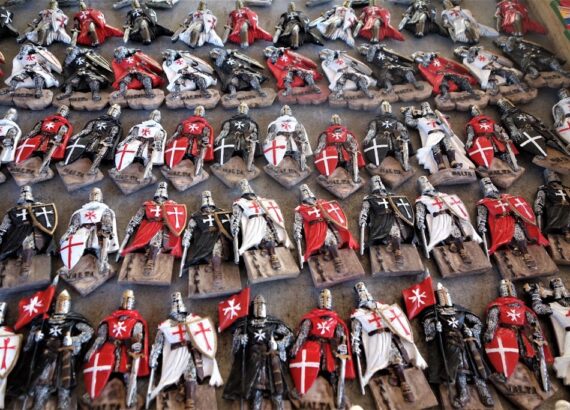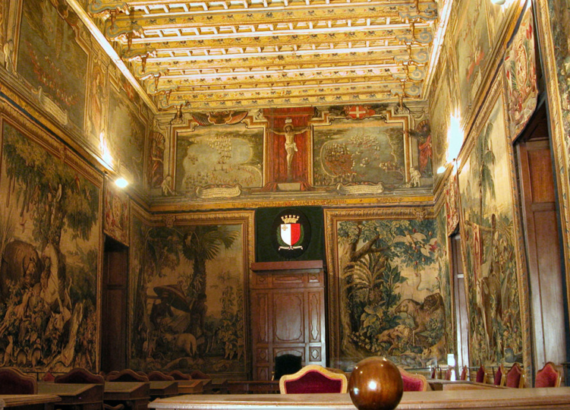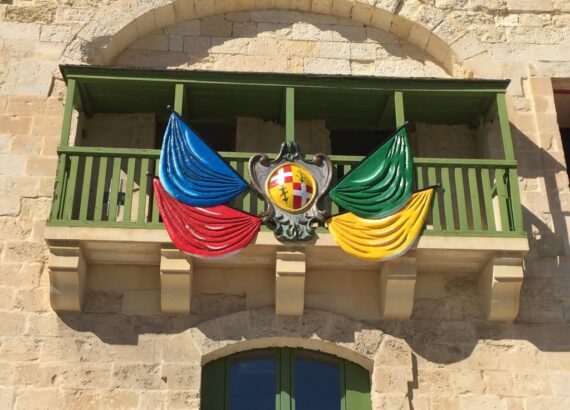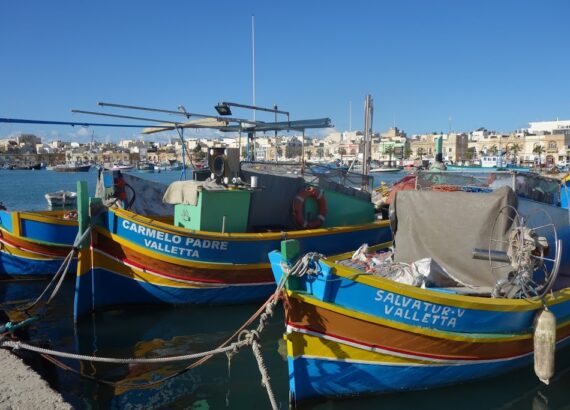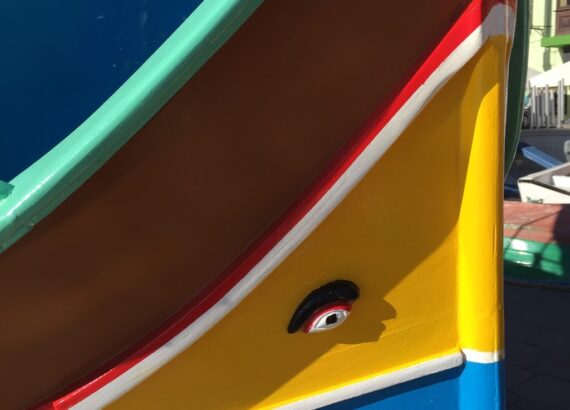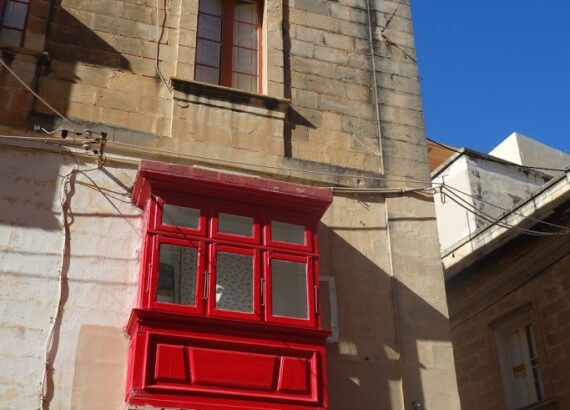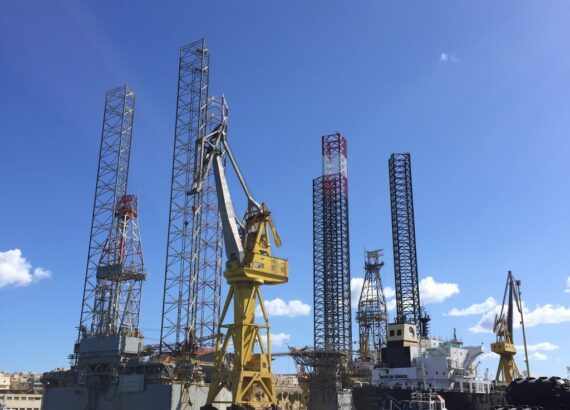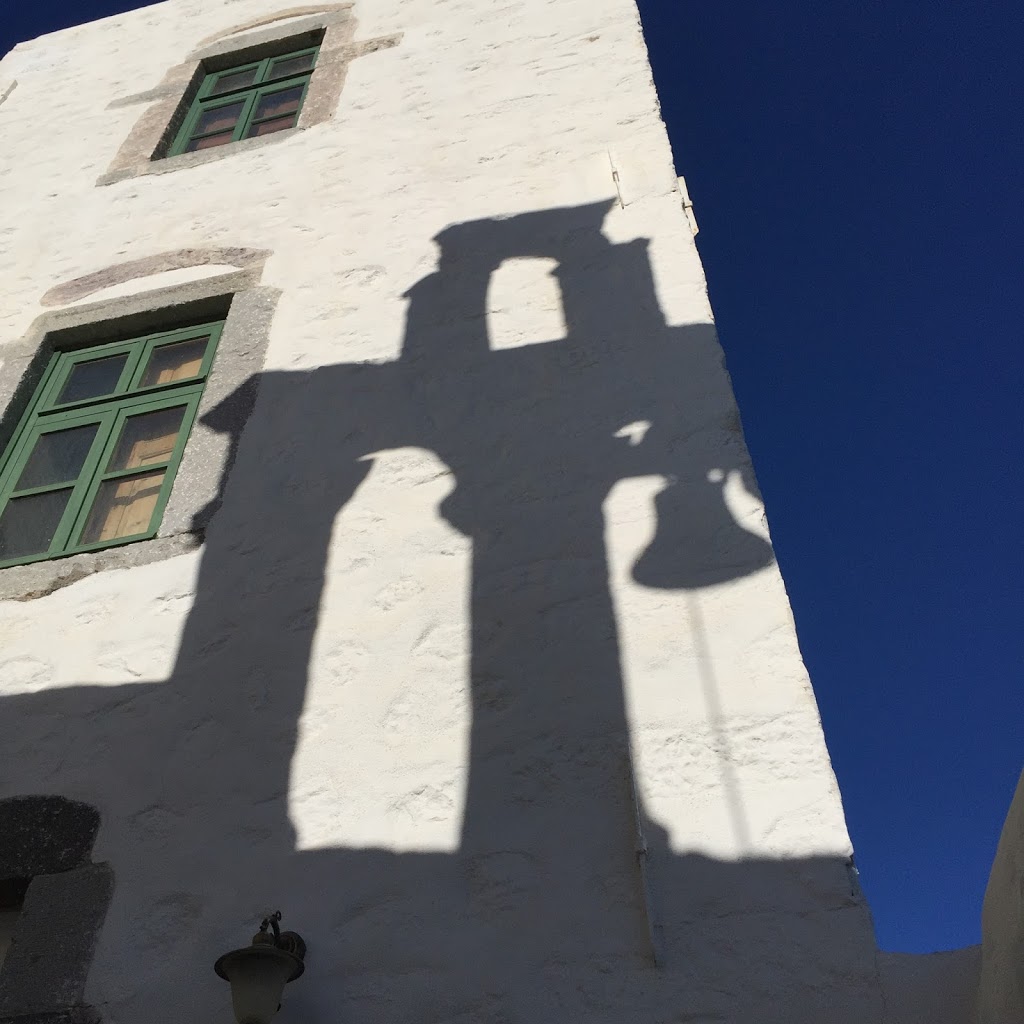MALTA – The Golden Island
The first time we visited Malta we saw a man with a falcon on his wrist standing by the side of the road. He didn’t look anything like Humphrey Bogart let alone Peter Lorre, but the falcon was truly a Maltese falcon. The Grand Masterof the Order of Knights Hospitallers of St John of Jerusalem, the ruler of the island between 1530 and 1798, had to “pay” a falcon as an annual tribute to the Emperor Charles V and his mother Queen Joanna of Castile as monarchs of Sicily. In return the Grand Master retained his rule over Tripoli, Malta and Gozo. Tripoli is now part of beleaguered Libya, and Malta and Gozo are the two main islands of the country of Malta set between Sicily and Libya.
Napoleon ended their rule The Order eventually moved to Rome and is now known as the Knights of Malta who do good deeds and occupy a marvelous spot on the Aventine Hill. If any of you have peeked through the keyhole in the gate to the garden to see the view of St Peters, that’s the spot.
For a taste of the Knights’ life when they weren’t fighting The Grand Master’s Palace in Malta’s capital, Valetta, is well worth a visit. The Gobelin tapestries from 1693 depicting highly-romanticized exotic plants and animals from the New World are a marvel of the designer and weavers’ artistry.
Malta has many lovely churches but we found it strange that the first building in Valletta, Our Lady of Victory (in Maltese, Tal-Vitorja), founded in 1565 to commemorate the lifting of the Ottoman siege that year, and the capitulation of the Italian fleet to the Allies in 1943, is in a desperate state with the paintings on the vault almost invisible due to water damage and neglect.
The small church isn’t far from the city’s magnificent and hyper theatrical Co-Cathedral dedicated to St. John the Baptist after the Knights withstood the terrible siege by the Ottoman Turks. In an amazing victory an army led by Jean de Valette and his 500 Knights supplemented with an assortment of Maltese civilians, 500 galley slaves, and Spanish, Greek and Sicilian soldiers, defeated Suleyman the Magnificat’s force of 40,000 fighters and 250 ships. It was a war where the Knights used captured Ottomans’ heads as cannonballs and the Turks floated Knights’ decapitated bodies away on mock crucifixes.
The steps of the church were covered in flowers in memory of an investigative journalist recently assassinated for her writings about alleged government corruption. But once inside the cathedral our minds were swept back in time, overwhelmed by what seems to be acres of gold leaf and paintings celebrating the glories of the Church in high Baroque style. But as on every visit, my eye is drawn to the macabre inlaid marble floors which cover Knight’s tombs, many of whom are depicted as skeletons.
The painter Caravaggio fled Rome after a murder, first to Naples and then Malta. A fitting ending to a cathedral visit is his marvelous Beheading of St. John along with the less-dramatic St Jerome that reside in the Oratory, built for private devotion (although it’s hard to envision doing so with the gaping crowds). The Beheading is the only painting he ever signed perhaps because he knew death was close on his own heels. The Knights took him in but his violent ways could not be controlled and he fled again after he was forced to appear in front of his masterpiece, the Beheading, to be “expelled and thrust forth like a rotten and fetid limb” from the Order.
But the Maltese sunshine lured us away from skeletons and grisly history to enjoy the golden-colored stone buildings that seem to have absorbed centuries of sunlight and now glow in contrast to the blue sky and sea.
We stopped for a coffee at the town of Marsaxlokk, also called Tas-Silg or Marsaskala, a fishing harbor. The brightly-colored photogenic boats were bobbing in the harbor after the morning’s catch was unloaded. Many had eyes painted on the bow in an ancient custom.
We drove on to L-Isla, also known as Senglea, to stroll down the narrow streets toward Il-Birgu (Vittoriosa) to tour the harbor where the Maltese underwent years of horrendous attacks on the British shipyards during World War II.
The bravery of the dockworkers and their families was so notable that King George VI awarded the people of Malta the George Cross to “bear witness to the heroism and devotion of its people” during the great siege they underwent in the early part of World War II. Italy and Germany besieged Malta, then a British colony, from 1940 to 1942. The George Cross was incorporated into the Flag of Malta beginning in 1943 and remains on the current design of the flag. The plaque is on the exterior of the Grand Master’s Palace and the harbor is still an important shipyard.
After finding a location called Ix-Xatt ta Tax-Xbiex on a map I looked up the derivation of the Maltese language so liberally sprinkled with Xs and Ks. It is derived from Sicilian Arabic with the addition of French and Italian along with an overlay of English, a reflection of all the conquerors who swept over the country for millennia.
We finished our day with a stroll along the waterfront below Valletta and stopped to admire the beautiful sailing ship The Sea Cloud. It was once owned by Margorie Merriweather Post, who founded General Mills, wore jewelry owned by Marie Antoinette, and vacationed at her estate in Florida: Mar-a-Lago of current fame. The ship is now used for cruises for those fortunate enough to have the time and money to enjoy it.
The Sea Cloud’s sails were furled, the lowering sun reflected off the golden town on a cliff above us. We too anchored for the day.
All photos except that of the Caravaggio painting and the Grand Master’s Palace copyright Judith Works
The Caravaggio is from Wikipedia Commons; The Caravaggio is from Wikipedia Commons, photo by Stefano Trezzi
Like this:
Like Loading...
TAGS

